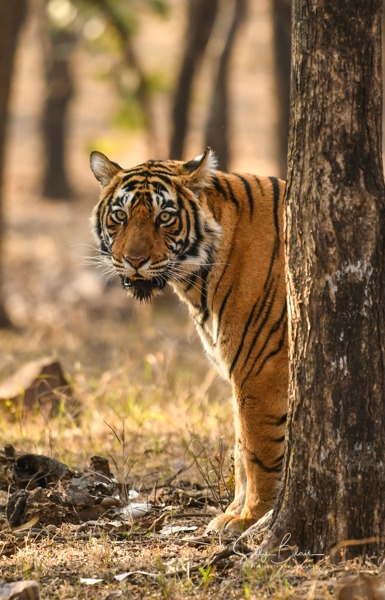Ranthambore Park nestled in the heart of Rajasthan, India, spans an impressive area of 1,334 square kilometers (515 square miles). It is flanked by the Banas River to the north and the Chambal River to the south, and it draws its name from the historic Ranthambore Fort, a remarkable feature nestled within the park’s boundaries.
Originally established as the Sawai Madhopur Game Sanctuary in 1955, the park initially covered 282 square kilometers (109 square miles). Its significance soared when it was designated as one of India’s prestigious Project Tiger reserves in 1973. Subsequently, on November 1, 1980, it earned the status of a national park. In a bid to expand conservation efforts, the nearby forests were declared as the Sawai Man Singh Sanctuary and Keladevi Sanctuary in 1984. Further broadening its horizons, the Tiger Reserve was extended in 1992 to encompass the adjoining Keladevi Sanctuary to the north and the Sawai Mansingh Sanctuary to the south, among other forested areas.
Ranthambore National Park boasts a diverse landscape featuring dry deciduous forests and expansive grassy meadows. Its vibrant flora encompasses a staggering 539 species of flowering plants.
The crown jewel of the park, the Ranthambore Fort, was erected in the 10th century and stands regally at an elevation of 210 meters (700 feet) above the surrounding terrain. Inside the fort’s formidable walls, you’ll discover three resplendent red Karauli stone temples dedicated to Lord Ganesh, Lord Shiva, and Lord Ramlalaji. The fort also houses a Digamber Jain temple devoted to Lord Sumatinath and Lord Sambhavanath, with their origins tracing back to the 12th and 13th centuries.
Among the park’s many lakes, Padam Talao reigns as the largest. Its tranquil shores are graced by the presence of a striking red sandstone structure known as Jogi Mahal. Adding to the natural wonder, you’ll find a colossal Banyan tree nearby, recognized as India’s second-largest, a testament to the enduring beauty of the land.
Ranthambore National Park’s expanse totals 392 square kilometers (151 square miles), inclusive of its buffer zone. The core area encompasses approximately 275 square kilometers (106 square miles), while the tiger reserve area previously covered about 334 square kilometers (129 square miles). Today, the park extends over a sprawling 1,334 square kilometers (515 square miles). The elevation within the park ranges from approximately 215 to 505 meters above mean sea level. The terrain is a captivating blend of dense tropical dry forests, open bushland, and rocky expanses interspersed with glistening lakes and flowing streams. The ecoregion here falls under the Khathiar-Gir dry deciduous forests.
For those eager to explore this natural haven, Ranthambore National Park offers various booking options, including canter safari booking and online tiger safari experiences. These choices allow visitors to embark on exhilarating adventures within the park’s captivating landscapes.
In essence, Ranthambore National Park is a sanctuary where history and nature converge, offering a mesmerizing blend of cultural heritage and stunning biodiversity. Explore its wonders through canter safari booking and online tiger safari experiences to truly immerse yourself in its natural beauty.
Wildlife
When considering a jeep safari booking in Ranthambore National Park, it’s essential to recognize the incredible biodiversity that awaits you. This renowned park is a habitat for the majestic Bengal tiger, elusive Indian leopard, caracal, jungle cat, and many other fascinating species. As you embark on your jeep safari adventure, you’ll have the chance to encounter Indian elephants, wild water buffalo, and the impressive gaur, among others. The park’s diverse landscape also hosts a wide variety of trees, plants, birds, and reptiles, creating a vibrant ecosystem that makes every safari a unique and enriching experience.
Tigers
Ranthambore is renowned for its abundant tiger population. However, in recent years, there has been a noticeable decline in the tiger population in Ranthambore due to poaching and various other factors. In 2005, the count stood at 25 tigers, which increased to 48 by 2013. As of 2014, Ranthambore National Park was home to 62 tigers, reaffirming its status as a significant safari park in Ranthambore for tiger enthusiasts.
Ecosystem valuation
Economic valuation of the tiger reserve estimated that its flow benefits are worth 8.3 billion rupees (0.56 lakh/hectare) annually. Gene-pool protection services (7.11 billion), provisioning of water to the neighbouring region (115 million) and provisioning of habitat and refugia for wildlife (182 million) were some of the important services that emanated from the tiger reserve. Other services included nutrient cycling (34 million) and sequestration of carbon (69 million)

